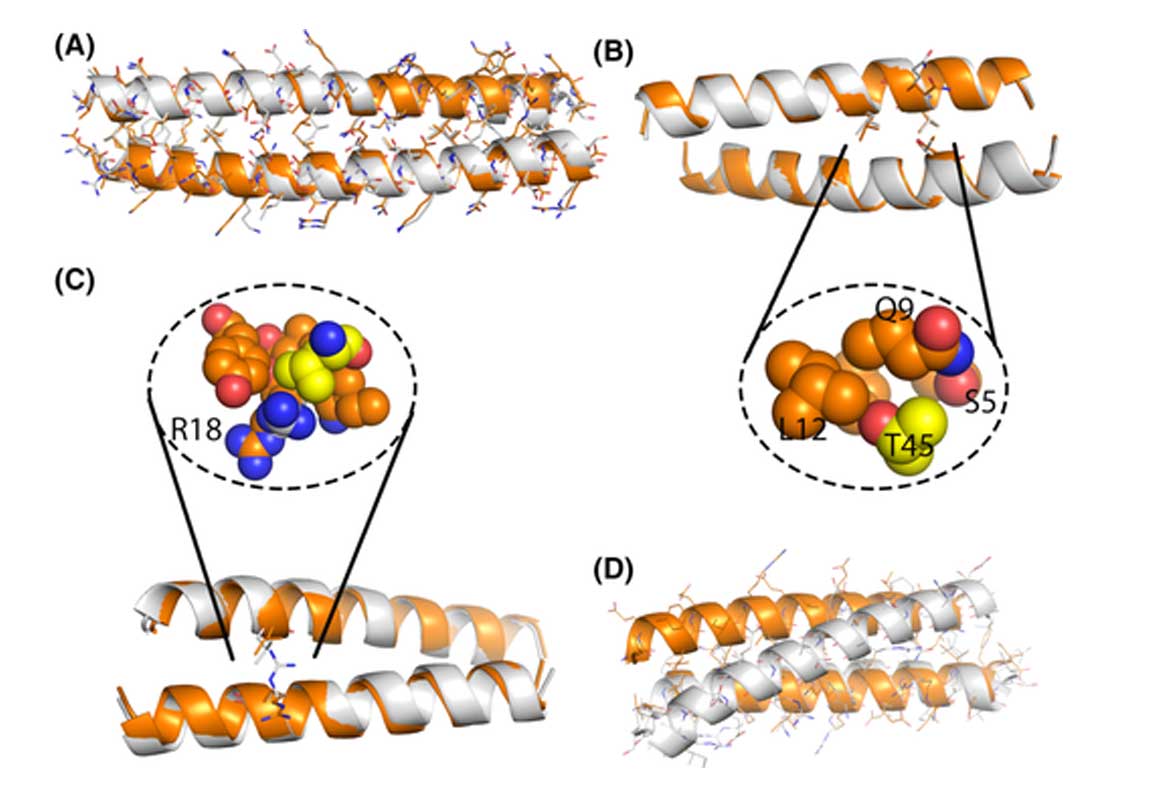
Computational assessment of folding energy landscapes in heterodimeric coiled coils
The coiled coil structural motif consists of alpha helices supercoiling around each other to form staggered knobs-into-holes packing. Such structures are deceptively simple, especially as they often can be described with parametric equations, but are known to exist in various conformations. Even the simplest systems, consisting of 2 monomers, can assemble into a wide range of states. They can form canonical as well as noncanonical coiled coils, be parallel or antiparallel, where helices associate with different degrees of shift, tilt, and rotation. Here, we investigate the energy landscape of heterodimeric coiled coils by carrying out de novo folding simulations starting from amino acid sequence. We folded a diverse set of 22 heterodimers and demonstrate that the approach is capable of identifying the atomic details in the experimental structure in the majority of cases. Our methodology also enables exploration of alternative states that can be accessible in solution beyond the experimentally determined structure. For many systems, we observe folding energy landscapes with multiple energy minima and several isoenergetic states. By comparing coiled coils from single domains and those extracted from larger proteins, we find that standalone coiled coils have deeper energy wells at the experimentally determined conformation. By folding the competing homodimeric states in addition to the heterodimers, we observe that the structural specificity towards the heteromeric state is often small. Taken together, our results demonstrate that de novo folding simulations can be a powerful tool to characterize structural specificity of coiled coils when coupled to assessment of energy landscapes.
